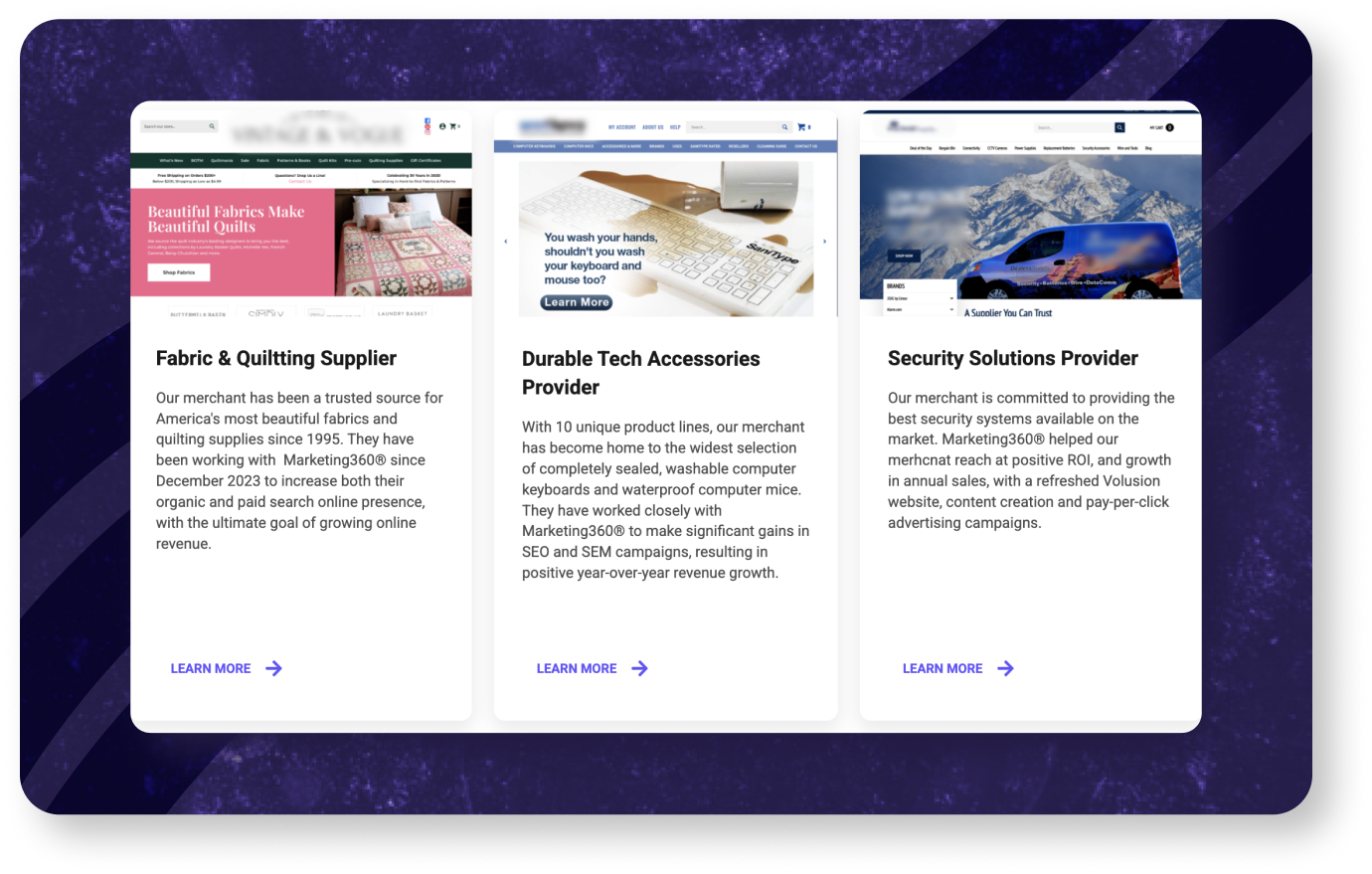Grow Your Business With The #1 Marketing Platform® For Online Stores
See why more than 20,000 business owners have trusted Marketing 360® to modernize their websites, attract more customers, and grow their revenue.
Start for Free

Volusion has officially partnered with the #1 marketing platform for online stores: Marketing 360®. Get business tools, marketing programs, and a dedicated marketing team — all in one platform.
Sell Everywhere
Master Marketing
Manage Everything
What Are Customers Saying About Marketing 360®?
Start for FreeWhy Our Merchants Love Us
Our merchants are transforming their businesses with our exclusive Marketing & Design partner, Marketing 360®. See why more than 20,000 business owners have trusted Marketing 360® to modernize their websites, attract more customers, and grow their revenue.


Is Your Website Design Falling Behind?
Great design elevates your brand and amplifies sales. In fact, 75% of consumers make judgments about your credibility based on your site design. Sign up for a free website checkup with one of Volusions Growth Specialists where we'll take a deep dive into your website and uncover tactics to drive more sales.
What Can I Expect From Marketing 360®?
First, we'll set you up with a free website checkup which will evaluate every aspect of your website, from design to SEO and everything in between. From there, you’ll work with an ecommerce expert who can help solve these challenges and more.
I want to grow my revenue
I need better business management tools
I need help with branding, design, video, content
I don't have time to focus on marketing
I want a marketing strategy that works for my industry
I need a website design refresh
I want more qualified leads
I need a system to manage my leads and customers
I need a better online reputation and social presence
I need help with email marketing
